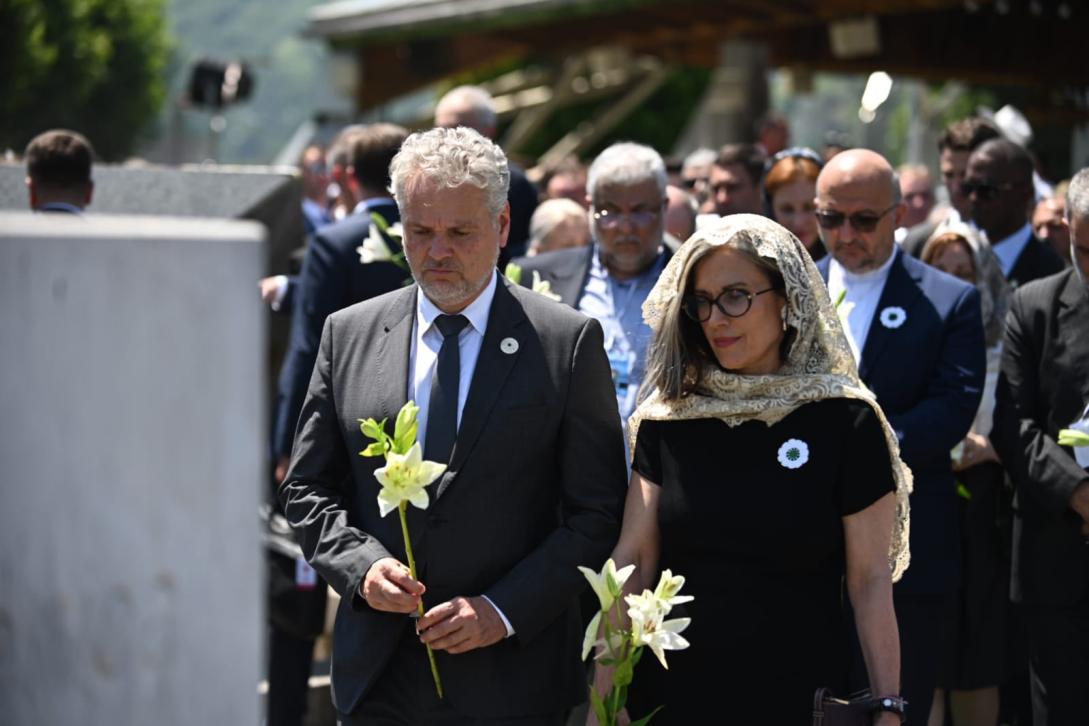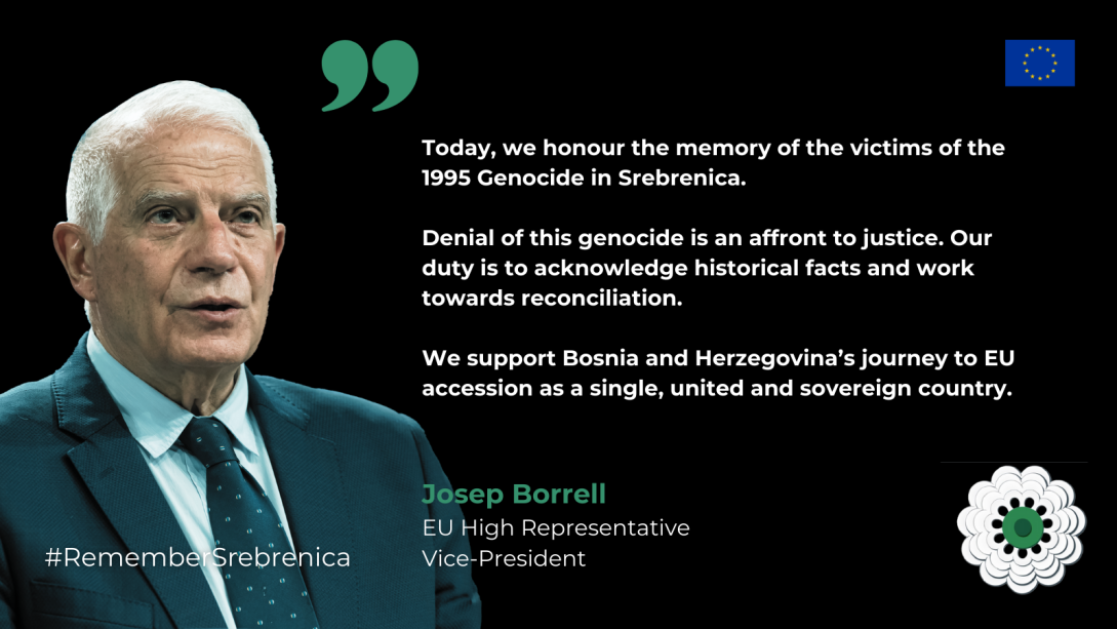Commemorating the 1995 Srebrenica Genocide: EU’s Commitment to Remembrance and Peace

Pictured: EU Ambassador to Bosnia and Herzegovina Johann Sattler, paying respect to the victims at the Srebrenica–Potočari Memorial and Cemetery.
Today, 29 years later, 14 of those victims, who were only recently identified, were laid to rest at the Srebrenica–Potočari Memorial and Cemetery. The European Union took part in commemorating the Srebrenica genocide.
Honouring the Victims
EU Ambassador to Bosnia and Herzegovina Johann Sattler, stood shoulder to shoulder with the grieving families and other participants honouring the victims at the annual ceremony at the Srebrenica–Potočari Memorial and Cemetery.
On 10 July, he also participated in the 20th annual “To Never Repeat and Never Forget” Bihać – Srebrenica Cycling Marathon, cycling with hundreds of others on the stretch of the route between Sarajevo and Srebrenica. Follow the link to see an Instagram post on this cycle.
High Representative/Vice-President Josep Borrell and Commissioner for Neighbourhood and Enlargement Olivér Várhelyi issued a poignant joint statement on the 29th anniversary of the Srebrenica genocide.
"Healing the wounds of the past requires acknowledging and teaching the historical facts, honouring and remembering the victims, identifying those still missing, and bringing all perpetrators to justice. This is key to confront the roots of hatred that led to the genocide.”
Their message was clear: There is no place amongst us for those who deny genocide, attempt to rewrite history, and glorify war criminals.
A Call to Remember and Act

European Union
High Representative Borrell, in his op-ed entitled “Remembering Srebrenica: Confronting History to Build Peace” which was widely published across the Western Balkan region, emphasized that we need to remember but also to act.
"We vowed never to forget – neither the victims, nor the enduring pain of their families and their loved ones. Their memory compels us to work every day to ensure that history does not repeat itself, in a world where peace feels increasingly fragile.”
In that work going forward, he mentions the recent UN resolution on the commemoration of the genocide in Srebrenica as important.
“By designating 11 July as the "International Day of Reflection and Commemoration of the 1995 Genocide in Srebrenica," the United Nations General Assembly, has elevated the significance of this tragedy beyond Europe.”
The Srebrenica flower
EU officials all over Europe wore the symbol of the Srebrenica genocide. The 11 petals of the flower represent the 11th of July, the white represents the innocence of the victims and green – hope for the future.
EU spokesperson in charge of foreign affairs and security policy Peter Stano was among those who wore the flower on 11 July.

European Union
Background: The Tragedy of Srebrenica
In July 1995, over 8,300 Bosniak men and boys were systematically killed by the Army of Republika Srpska.
Srebrenica, designated as a UN safe haven, became a symbol of the international community's failure to prevent genocide. The International Criminal Tribunal for the former Yugoslavia (ICTY) and the International Court of Justice (ICJ) later established these atrocities as genocide.
The genocide in Srebrenica was the culmination of war and ethnic cleansing that swept across Bosnia and Herzegovina from 1992 to 1995, claiming around 100,000 lives, half of them civilians.




